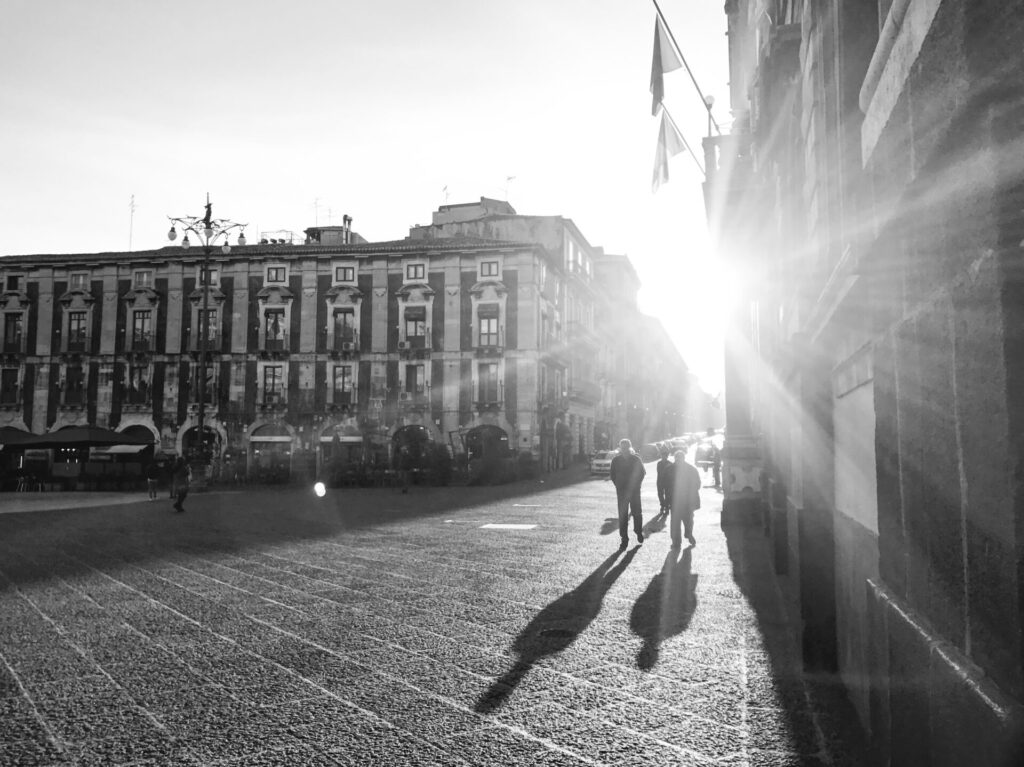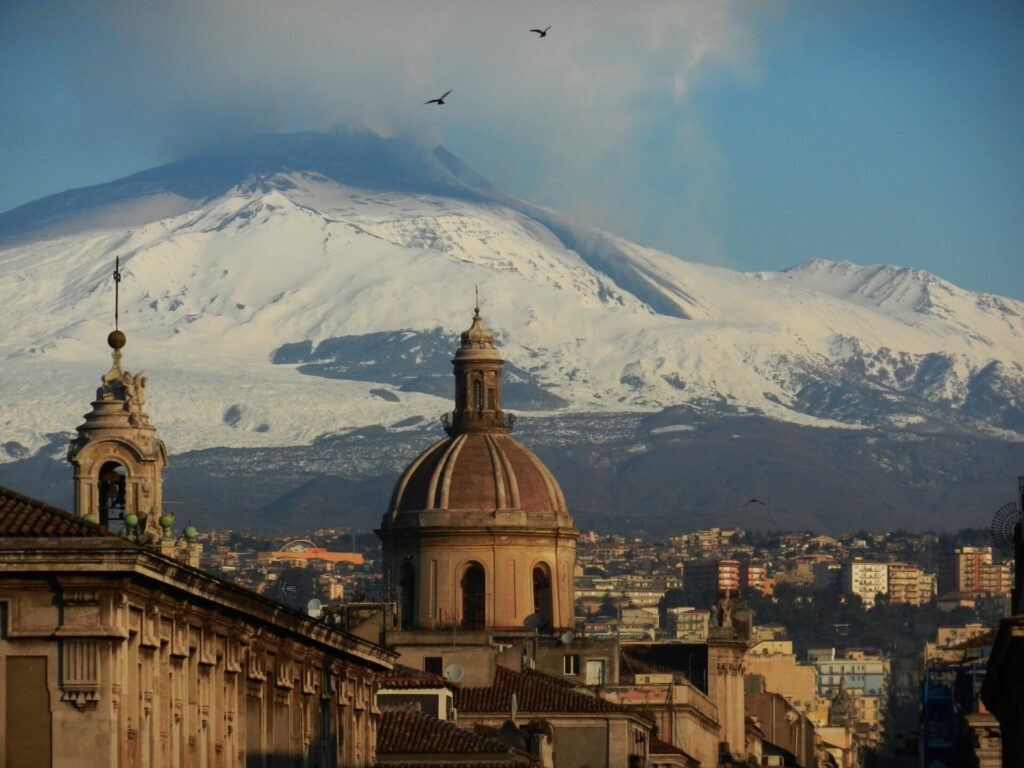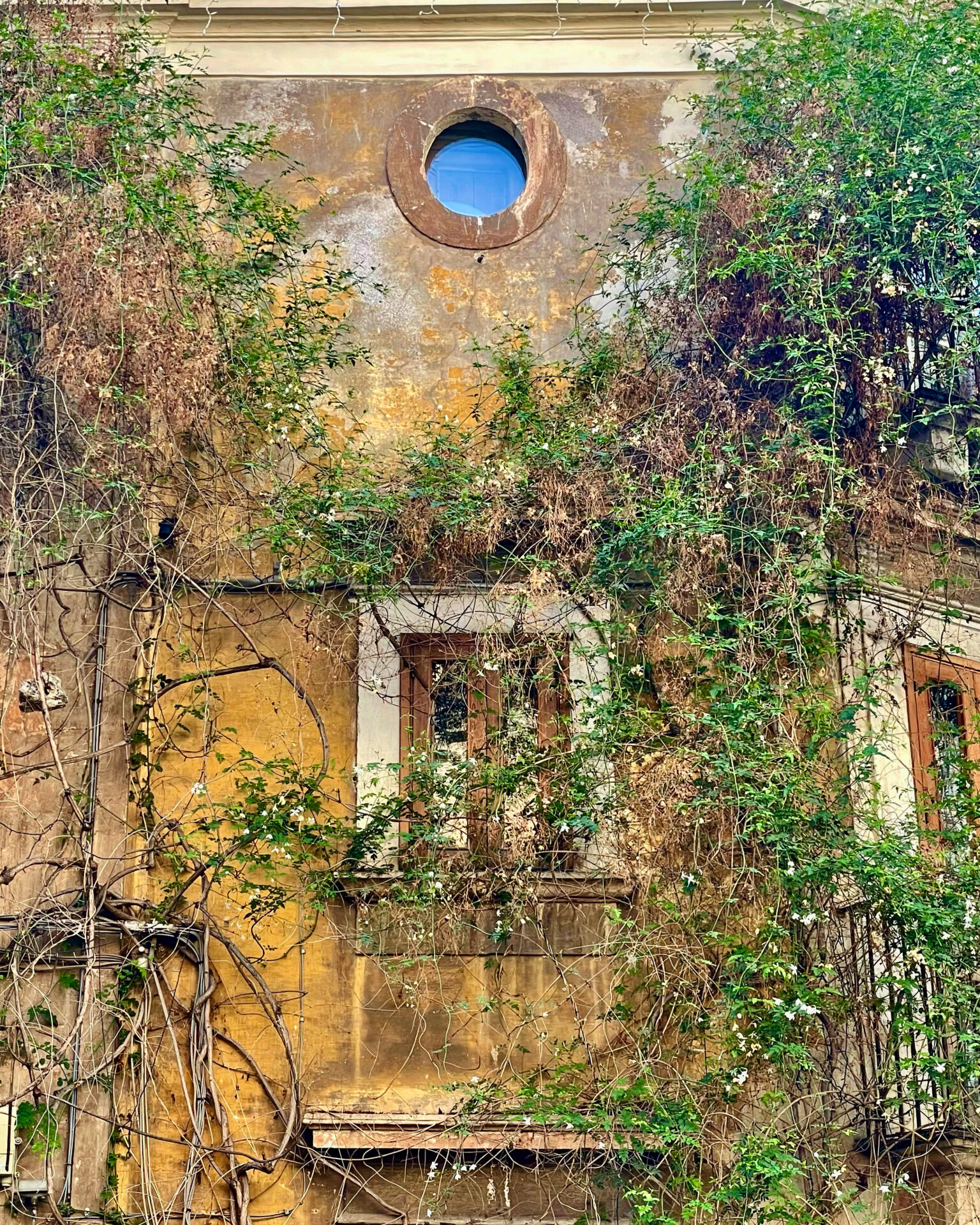THE NEW TREND OF THE ITALIAN ONE EURO HOUSES
For several years in Italy, there has been an initiative regulated by local administrations that has garnered a lot of interest both locally and internationally, known as the “One Euro House” program, which offers the opportunity to purchase old and abandoned houses at the “symbolic price” of one euro. These properties are in small historic towns, sparsely populated, which have experienced the exodus of their inhabitants to more attractive contexts, such as major Italian cities, and especially abroad. These are centres that, despite their historical significance, have been abandoned in the name of capitalism, in search of more fulfilling employment and income.
The first 1 euro house project started in 2021 in Sicily, in Salemi, with the noble intention of repopulating the historic center, revitalizing the local economy, and boosting tourism. It’s seen as a somewhat simplistic approach by some, to social and urban redevelopment, aimed at counteracting the abandonment process that has accumulated over the years. This process has much deeper roots and culminates in the abandonment of one’s native home, the last and most painful of steps. Generally, those who abandon their homes do so because they feel forced to and have no other choice, unable to change their surrounding conditions, and feeling “rejected” by their community.
Let’s try to describe how the One euro house projects work, how people can participate, whether it’s worthwhile, what costs are involved, the advantages, and if there are any hidden pitfalls. Purchasing property in another country always produces some anxiety because one is unfamiliar with the legal, urban planning, and tax regulations. Every exploratory journey into unknown territories hides pitfalls. Let’s try to identify them and put the interested party in a position to have a clear understanding of the entire process of participating in the acquisition tenders for properties, the procedures, and the requirements needed.
As I have mentioned, over the past few years, the phenomenon of 1 euro houses has been gaining traction and attracting more and more Italian and foreign buyers who, enticed by the symbolic price, wonder how it’s possible to purchase a house at such a low cost in the most beautiful country in the world, Italy. It’s worth remembering that Italy holds 70% of the world’s artistic heritage and is often referred to as the bel paese. It’s the country everyone wants to live in, yet many are leaving. Let’s explore why and whether everything that’s said about it is true: I have returned to Italy, to Sicily, after many years abroad and after living in countries with high levels of civilization. In the end, I have returned in search of life’s essential values.
WHAT IS ABOUT “1 EURO HOUSE” PROJECT?
If you are looking for byuing a house in Italy, Sicily represents a great opportunity, in terms of price and yealds. Read here to know why to buy a property in Sicily.
I said already that one euro houses are located in small, decentralized, and abandoned villages, made available for sale by the local administration, acting as an intermediary, with the aim to be renovated and repopulated.
These houses often require significant renovation work because they have been uninhabited and abandoned for a long time, often in very poor condition, having received no maintenance for many years. They are typically located in historic centers that, despite their particular beauty (many of these centers are among the most beautiful villages in Italy), are far from major cities, inland, and poorly connected.
Many of these villages are in southern Italy or in areas affected by depopulation, which has seen inhabitants moving to more attractive centers or abroad in search of more rewarding employment. For those dreaming of a home in unique places, away from stress and hectic life, and those who dream of Italy and would like to realize it without spending much, the 1 euro house project represents a tempting opportunity and attracts buyers from all over the world, especially from the United States, where there is a large community of Italian origin. Purchasing a home in the land of ancestors could represent a moment of reconnection with one’s roots for many, rather than just a favorable real estate investment. Many people think about spending their retirement years in Sicily or other parts of Italy.

REGULATIONS OF 1 EURO HOUSES
Buying 1 euro houses and participating in selections and tenders in various Italian municipalities is not a simple and straightforward process, and regulations may vary from one municipality to another. However, there are common aspects that we can analyze to understand the requirements and guarantees requested for participation and eventual purchase of the properties. It is well known that Italy is a complex country in terms of bureaucracy, but the reality is that Italy is territorially complex, and many aspects come into play, especially regarding construction, urban planning, and territorial planning. In reality, it’s not as complex as it seems; all it takes is a good understanding of how the system works and relying on qualified professionals. We are here for this!
Let me explain how the process of selling “one euro house” works, in a nutshell.
The local administration identifies abandoned houses within its inhabited center and contacts the owners for sale. In reality, owners express to the municipality their interest in selling their real estate within the “1 euro house” project. They fill out a participation form indicating all the details of the property they would like to sell. These are usually properties that owners prefer to get rid of because the taxes they pay far exceed the value of the property, or because they are unsafe, and the costs of making them safe wouldn’t be justified, or because they are small and belong to many owners who inherited the property. I want to be clear here: please do not expect luxury villas with swimming pools or mansions with frescoed ceilings and halls fit for a baron!
The municipality publishes a participation notice with an attached list of properties for sale at the symbolic price of one euro. Symbolic: the key to understanding the profitability of the investment lies in the ability to decode the symbolism.
In the notice published by the municipality, citizens, Italian or foreign, can participate by filling out the participation form, expressing interest in purchasing, and submitting a series of documents that provide some guarantees to the municipality. Let’s remember that the houses are “sold off” with the principle and purpose of repopulating the centers; therefore, it’s imagined that these houses will soon be renovated and inhabited either as a residence or vacation home. In essence, potential buyers are asked to meet certain obligations that condition the sale.
OBLIGATIONS, OPPORTUNITIES, PROS AND CONS
As said:The Municipality requires guarantees to participate:
– The potential buyer must start the renovation project (and acquire the necessary approvals) within a year of purchase, start the work within 2 months of acquiring approvals, and complete the work within 3 years of starting.
– The buyer must have the financial capacity to cover all expenses for renovation and purchase.
– In some cases, an economic deposit of €5000.00 or a surety bond may be required to guarantee commitments.
– In rare cases, the municipality may require payment of a fine if commitments are not met after acquiring the property.
– The municipality gives priority to buyers who decide to move their residence to the municipality: I must say that this is rare, as these are remote centers, poorly connected, and far from real life. Indeed, it’s rumored that this is a unique opportunity for young couples to buy an affordable residential home where they can live. I don’t know what young couple, perhaps wanting to have children, would decide to live in medieval urban centers, perched on mountains, kilometers away from the nearest available cinema. It’s also worth considering that those “affordable costs” relate, only in part, to the purchase costs, forgetting that renovations are often significant, especially for medium/large properties that should accommodate a family with two or more children. I will talk about hidden costs and renovation costs later.
There’s no doubt that it’s better to buy a house for one euro than for one million euros, but those who want to buy a house for one euro would like to spend one or at most two euros, and that’s not the case. Opportunities exist, but they’re not necessarily what they seem: often we’re not facing a unique once-in-a-lifetime opportunity.
Moreover, it’s complex to acquire the property because there are many requests and, as seen, many requirements. It’s necessary to dedicate time and resources to the post-purchase phase, and not everyone can meet the deadlines set by the administrations.
Among the advantages of such an operation, there is certainly a social impact with, as in the case of Sambuca di Sicilia, the establishment of small communities of foreigners who have bought and revitalized the town. Another advantage is the reduced cost of living in such contexts, a more relaxed lifestyle, and certainly a better relationship with nature, a more social approach to life, and generally a higher quality of life.
There are disadvantages that may not be immediately apparent to inexperienced eyes of those living in another country and are dazzled by the Italian dream. The disadvantages are related to “hidden costs” that inflate the initial purchase cost and renovation costs, which can also reach significant amounts depending on the condition of the property. It should also be noted that some of the Italian building heritage has undergone changes over the years, which were not made in accordance with the law and need to be regularized at the buyer.
Accepted the purchase request, there are notarial fees to be incurred. In Italy, it is the notary who handles the registration of real estate sales deeds, acting in the interest of both parties: the seller and the buyer. The first additional expenses to bear are those related to the notary’s fee and the registration expenses of the sales deed. These, as in other countries, vary depending on whether you are buying a primary or secondary residence, and whether this house is your residence or not. To these expenses are added those for the regularization of the property (such as CILA in sanatoria, SCA, APE, etc.) and the registration of the new floor plan at the Land Registry. We will see all these expenses in detail in the dedicated paragraph below.

ONE EURO HOUSES IN SICILY : SOME ILLUSTRIOUS CASE HISTORY
Over the past few years, many international stars have purchased properties in Italy, some participating in the “1 euro house” tenders. Among these is the example of Lorraine Bracco, Hollywood star (Goodfellas), who bought and renovated a house in Sambuca di Sicilia. It is also known that Airbnb has acquired a property in Sambuca to turn it into a vacation home. I personally visited the property renovated by Airbnb and I can say that, assuming it was purchased for 1 euro, to make it attractive for tourism purposes, they certainly spared no expense in choosing the interventions and finishes during the renovation.
Another famous experience told on TV is that of Amanda Holden, British television presenter, who bought in Salemi, Sicily, and recounted her renovation experience in a BBC TV series, “The Italian Job,” with Alan Carr. It’s a funny comedy that tells, with a lot of poetic license, all the bitter and sweet steps of a renovation done in an unknown land, with unknown techniques, and workers who don’t speak English.
I renew the invitation to rely on professionals who know how to do their job, speak your language, and are well acquainted with the fiscal, construction, and urban planning procedures of the territory where you want to buy the house.
ANALYSIS
After analyzing the world of properties in Sicily and Italy, understanding how to proceed with the purchase of a property, and grasping the concept of buying a house for one euro in Sicily, it’s time to make some analyses and considerations from the perspectives of an architect, an Italian citizen, an expatriate (having lived abroad for many years), and a professional who aims to assist those interested in purchasing property in Sicily.
NOT ALL THAT GLITTERS IS GOLD
There’s an Italian saying that goes, “Not all that glitters is gold,” meaning that not everything that appears precious or beautiful is. Buying a house always entails risks, and buying a house for one euro involves many expenses that, as we’ve seen, are not always disclosed but do exist. After all, if the houses were perfect, beautiful, in a wealthy and attractive context, they wouldn’t be worth just one euro. The world of make-believe exists only in movies or fairy tales.
However, this doesn’t mean that opportunities don’t exist; they just need to be carefully analyzed, taking into account the condition of the properties, the context in which they are located, and the relative and absolute position of the village where you intend to make the purchase. These are all factors to be seriously considered before making a decision. Because, as I mentioned, many other opportunities besides one-euro houses might ultimately cost less and involve fewer temporal obligations, allowing you to proceed at your preferred pace.
CAUTION, CAUTION, CAUTION (Versus LOCATION, LOCATION, LOCATION)
Carefully analyze the documents and seek assistance from independent professionals. Often, real estate agents (worldwide) tell stories and assure you that you can do anything, in words. The reality is different. Maybe you can do what they say, but at what cost? There’s always a cost-effective point for an investment unless you’re a millionaire, but I don’t think a millionaire would be seeking a one-euro house.
Tip: One euro houses are very interesting when considering investments beyond individual purchases; I’m thinking of alberghi diffusi (scattered hotels) or village hotels. I’ll try to write about this topic in the future because I’ve always considered these interventions much more qualifying since they’re managed by those who see the whole picture, have every interest in maintaining a high level of property maintenance, and create a driving force for the local economy. Around a scattered hotel, which creates attractiveness, many accompanying activities are created, and probably even people who had initially left the area due to lack of opportunities are attracted back.
Sicilian people are very attached to their land: when they leave, they do so reluctantly and are always happy to return. Having a territory lived in by Sicilians is probably the primary interest even for those investing from abroad: they invest in Sicily to immerse themselves in Sicilian traditions and culture and perhaps don’t wish to live in a Central European enclave in the Nebrodi Mountains.

CONCLUSIONS : IT IS WORTH TO BUY A ONE EURO HOUSE IN SICILY?
Despite the good intentions of administrations, as an architect, I think the One Euro house project is a good territorial marketing strategy, a good ploy to sell houses that would otherwise be of no interest, and a good method to make properties safer that would otherwise remain abandoned.
However, I don’t believe it’s a winning direction from an urbanistic and social standpoint. Attracting people to repopulate a center depends on social and infrastructural factors and not just on the attractive price of houses for sale; especially because, if those houses are worth little, the problem lies elsewhere and that’s where action should be taken.

